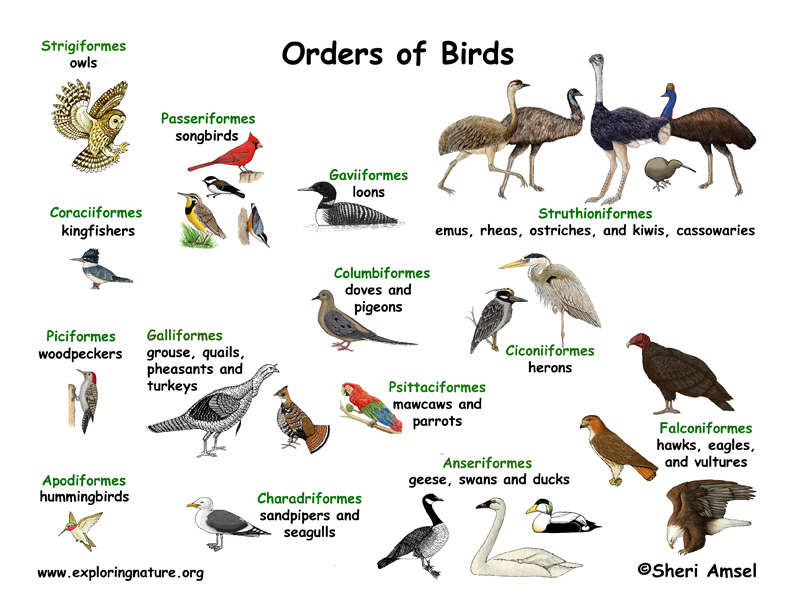

Birds come in all shapes and sizes but they all have certain traits in common.
Flightless birds include ostrich, emus, rhea, cassowary, kiwi, penguins, and others. They all nest on the ground. Flightless birds have developed other ways of defending themselves from predators.
Can you name one famous flightless bird that became extinct because predators invaded the islands where they lived?
There are many different groups (Orders) of birds. The different orders are separated by different traits. Here are some of the orders of birds.
Orders of Birds:
When you research information you must cite the reference. Citing for websites is different from citing from books, magazines and periodicals. The style of citing shown here is from the MLA Style Citations (Modern Language Association).
When citing a WEBSITE the general format is as follows.
Author Last Name, First Name(s). "Title: Subtitle of Part of Web Page, if appropriate." Title: Subtitle: Section of Page if appropriate. Sponsoring/Publishing Agency, If Given. Additional significant descriptive information. Date of Electronic Publication or other Date, such as Last Updated. Day Month Year of access < URL >.
Amsel, Sheri. "ABOUT BIRDS" Exploring Nature Educational Resource ©2005-2024. December 13, 2024
< http://www.exploringnature.org/db/view/ABOUT-BIRDS >
